Via Ferrata – the Iron Way
“Are you sure America is ready for this?” asked my wife as she stepped onto a single strand of wire strung across a deep gorge. I’m a notorious bad judge of what American’s really want, but I’m definitely fired-up about Via Ferrata’s and recently had a chance to experience six of them in France under the guise of doing research for possibly building some in Utah.
Via Ferratas were first developed in the Italian Dolomite’s during WW2 as a way of moving heavily loaded foot soldiers safety through the rugged, exposed mountain terrain. The term translates to the “iron way” and generally involves having a fixed cable to clip into and iron rungs installed in blank sections. Unlike skiing or rock climbing where it is common to push yourself until you fall, taking falls is generally not a part of Via Ferratas and the object is to reach beautiful or exposed areas, but with maximum security. On my first Via Ferrata outing in 2001, my partner at the time told me that a harness and tethers were “only for stupid tourists” which led to a memorably terrifying experience. The proper equipment is mandatory for Via Ferratas, but that only consists of a harness, tethers and a helmet. Because of this, it is very easy to get into Ferrataing and it’s something almost anyone can do. Once at the top, a hiking trail takes you back, which makes for a very fun loop.
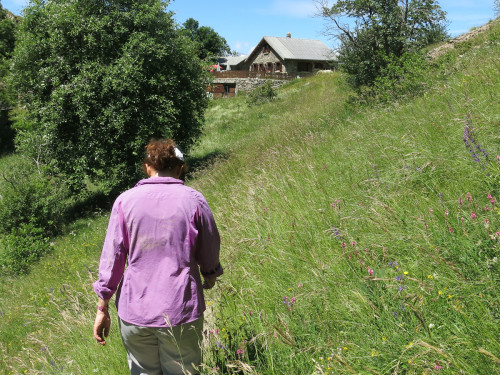
You gotta love France – at the end of the amazing Cascade (waterfall) Via Feratta outside of La Grave, a five minute walk leads you to a mountain refuge hut from the 1500’s. Gorgeous.
I’m not a historical expert on Ferratas, but imagine that people kept using the original military ones long after the battles were over and discovered that they were a lot of fun, which in turn led to sport Ferratas. Nowadays, there are hundreds of them all over Europe and they are incredibly popular. They range from little tiny ones for families with kids to very long, exposed outings which can go on for over 3,000′. A friend of mine mentioned he and his wife did a Via Ferrata link up which took three days.
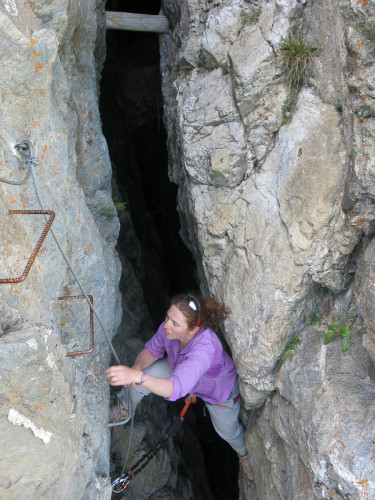
This Via Ferrata was directly across from the classic Freux Couloir in La Grave, France and is one of the longest in the nation at about 750 meters. What made this even more interesting was that it followed a lead mining seam which had been worked as far back at the 1400’s. That big gap behind Polly and the wedges log are all from the mining days.
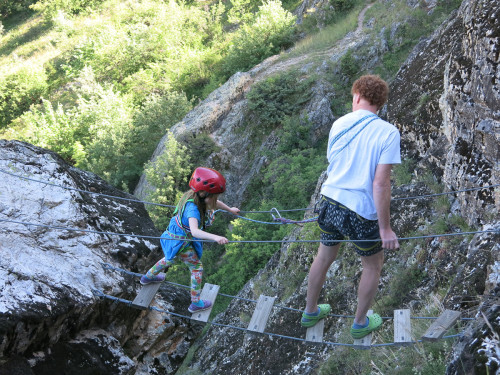
Stella, aged five, following Uncle Colin across a footbridge on an easy Via Ferrata. The kids loved it.
As a sporting outing, Ferratas come in a wide range of flavors. Some of them pack as much exposure and excitement into as tight a place as possible with bridges, ladders and rungs up overhanging aretes, and some are more like remote alpine climbs where there is a cable for protection, but most of the climbing is done with natural rock holds. They are all fun, but very different. Personally, I kind of prefer the more alpine variety which utilizes ledges and moderate climbing and only resorts for rung ladders to connect blank sections.
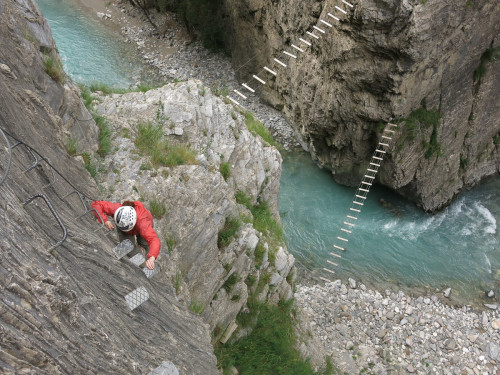
An example of a very sporting Via Ferrata. This one had a flat, five minute walk from the parking lot and crossed the river five times. Super fun!
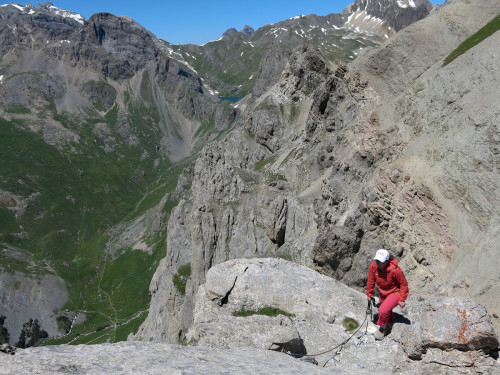
This was more of an alpine Via Ferrata and relied more on natural holds and ledges. It was probably my favorite of the six we did.

The Cascade Via Ferrata outside of La Grave is kind of a hybrid sport line and alpine line. It parallels a waterfall and provides surreal exposure.
We had a chance to do a Ferrata with a friend who builds them and he estimated that it takes roughly 2-3 people working for 2-3 weeks to install one. In France, they have become so popular that most of them are underwritten by the local communes (townships) as part of attracting tourists. La Grave has three of them within 10 minutes of town and within an hour or so there are another 15-20. The towns print up booklets to promote them and there are also many guidebooks available. From a sports center viewpoint, this seems like a great idea to me as the Ferratas can be a dedicated day by themselves, or part of a weekend of boating, climbing, biking and sightseeing.
________________________________
Help support StraightChuter.com and keep your noggin protected with a Black Diamond Vapor Helmet from Backcountry.com. Click on the photo below.
Category: Announcements, Via Ferrata

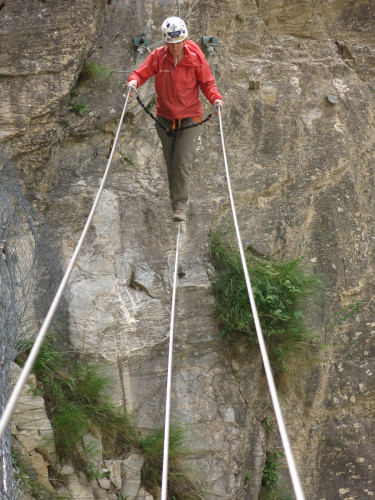

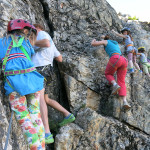
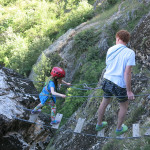
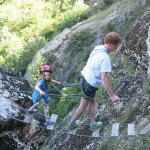
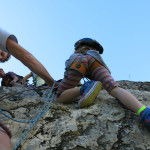
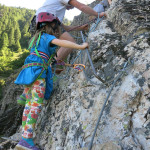
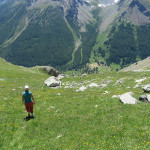
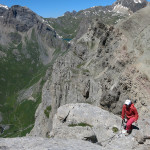
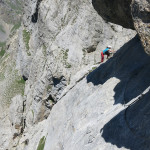
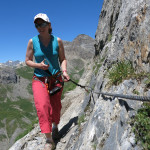
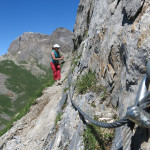
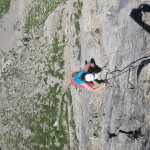
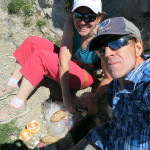
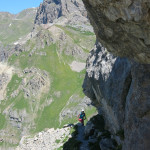
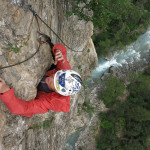
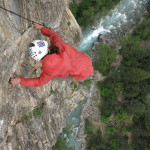
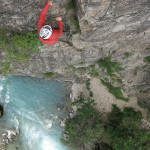
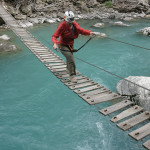
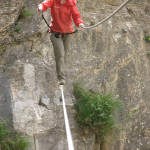
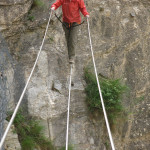
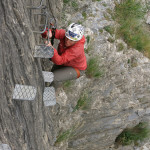
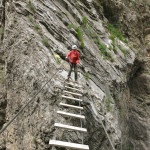
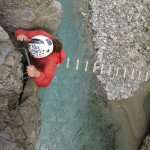
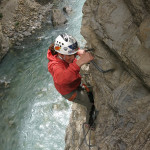

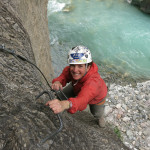
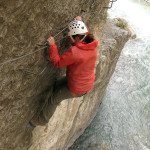
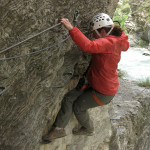
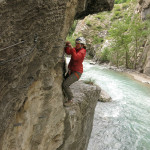
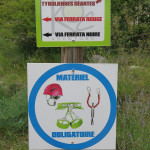
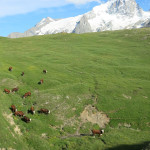
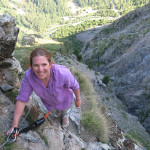
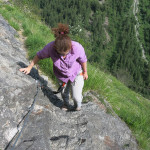
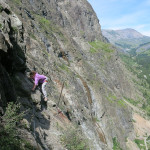
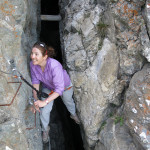
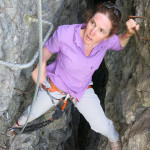
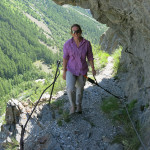
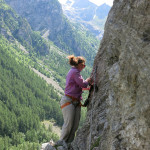
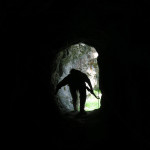
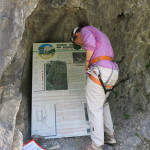
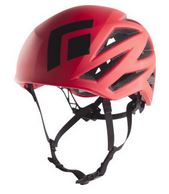








Our new interconnect?
Just a small correction, The Via Ferrata (Italian) , Klettersteig (German) is a product of the Great War (WWI) not the Second World War… and indeed they are fun.
Cool.
Thanks millcf17! I had no idea they went back that far.
Andrew, Will you be doing the Ice axe float trip to Antarctica this Year?
Awesome scenery. Did the cows take the via Ferrata to get there too? :)
Andrew, I’m living in Europe currently and think that these via ferrata’s are as cool as the autobahn and (lack of) open container laws. If/when they kick me back to the US kicking and screaming, I was thinking of trying to put up one near my old home. I’m interested to see how this goes for you as I imagine I might run into the same problems. I see liability as the biggest problem of putting one of these up unless you do it on private property. Would you mind posting your work here or getting with me offline? Thanks and good luck.
Lipella route on the Tofane and the Punta Anna route are my favourites (both in the Dolomites close to Cortina). In spring, with sections of the cables buried under snow, many mountain via ferrata can provide great expeditions. Steep rock tends to have the cable exposed whilst easier sections along ledges and across couloirs require traditional ice axe, crampons and rope technique (though cable anchors can often be found near at hand for belaying).
Hello Jack – sorry for the super extended delayed response, but yes, I’ll be heading to Antarctica again with Ice Axe Expeditions in November. Are you coming along?
Thinking about it. I will let you know if I sign up.
America is ready for this, check out the precipice trail in Arcadia NP. Surprised me that the trail was open in a National Park and no safety gear is required.
CMH has a Via Ferrata in the Bugaboos, plus you could say Half Dome is one. I’d like to see more in N.A. My kids would love it.
If you want to watch an excellent movie about warfare between Italian and Austrian Mountain troops during WW I in the Dolomites, get “Berge in Flammen”. A German movie, it shows Austrian troops occupying a mountain top in the Dolomites fending off Italian invaders. Lots of climbing and ski footage during fighting in the Dolomites
JCoates – you need to go do that winter skimountaineering via ferrata in Austria. I wish we had done that before I left. Brad
We absolutely need via Ferrata here in the US. I’ve wanted to set them up here in WA for a while. We also need Alps/Swiss Haute Route style hut systems. It would be incredible!